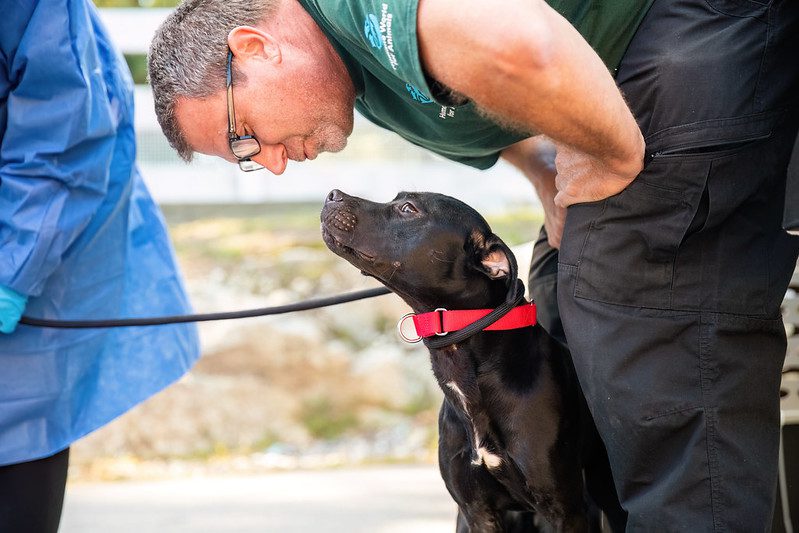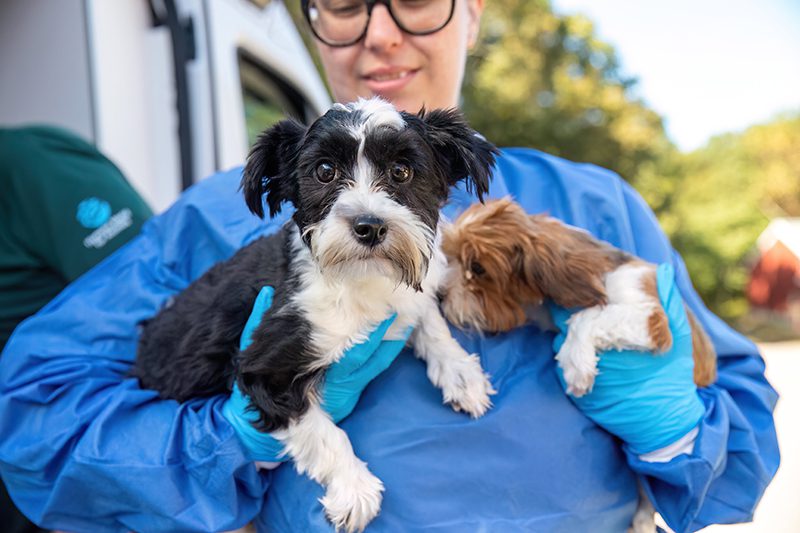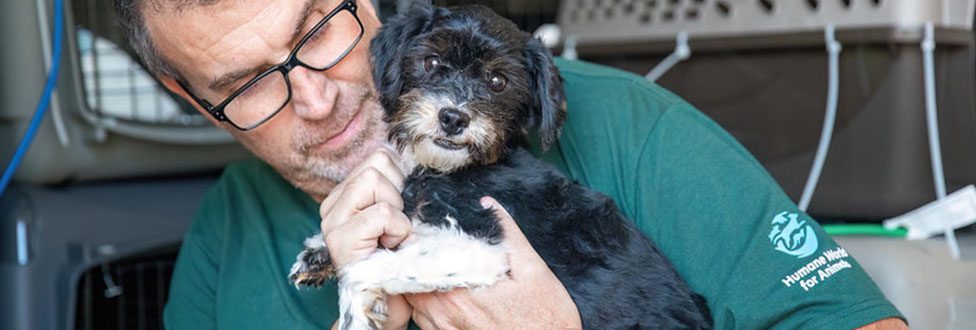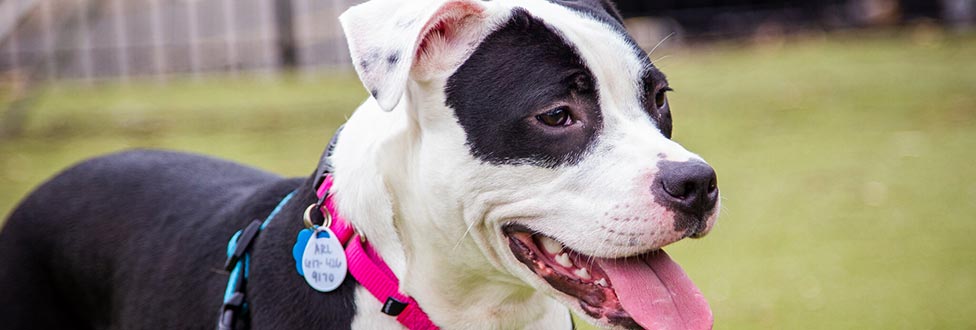Dogs Rescued from Alleged Dogfighting and Breeding Operations
Last week, the Animal Rescue League of Boston (ARL) received six dogs from Humane World for Animals after being rescued from alleged dogfighting operations in Fort Wayne, Indiana, and a large-scale case of alleged neglect at a breeding operation in Harford County, Maryland.
Wrangler, a one-year-old pittie mix, was among the dogs rescued from the dogfighting operation in Indiana, involving 22 animals. The region was under a heat advisory with the heat index reaching approximately 110 degrees when responders arrived at the first property, where they found dogs panting and in filthy hutches and cages. Despite the scorching heat, many of the dogs had no access to water, and some had significant scarring consistent with dogfighting. On the second property, dogs were found on heavy chains outdoors with inadequate protection from the elements – while other dogs were found in cramped cages inside with no water. Responders discovered dogfighting paraphernalia on the properties, including several treadmills and a stand typically used in dogfighting operations to restrain dogs for breeding.

Wrangler
Calendar, Coffee, Fitbit, Slinky and Tassle, all Havanese-mixes between 11 weeks and 5 years old, were rescued from a breeding operation in Maryland, involving over 100 animals. Rescuers were overwhelmed by the odor of ammonia and feces emanating from the residence. Dogs were found roaming throughout the residence, while others were contained in filthy, stacked wire-bottom cages without apparent access to food or water. Some of the dogs were severely matted, and veterinarians noted several suffering from painful dental disease, eye discharge and skin infections. Veterinarians noted many of the dogs were underweight and some were emaciated.

Coffee and Fitbit
All of the dogs are fearful, but most are in relatively good health. All six dogs underwent medical evaluations at ARL’s Dedham Animal Care & Adoption Center and will receive veterinary attention and care before being made available for adoption.

Slinky and Tassle
“The Animal Rescue League of Boston is honored to welcome these resilient dogs who have endured unimaginable suffering and deplorable conditions. We are dedicated to providing them with the loving homes and lives they truly deserve, and it is our privilege to help them as they begin their journey of healing,” said Dr. Edward Schettino, ARL President and CEO.
Make a donation to support these dogs.
*Note: These dogs are currently not available for adoption.















